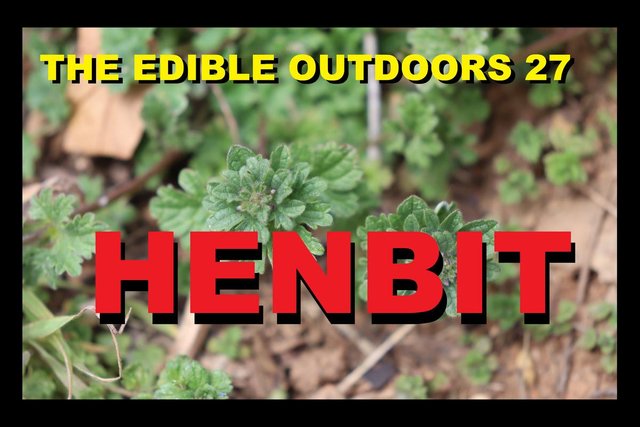
Free spring salad is once again in season!
As always with this series, I am not trying to give dietary, nutritional, or medical advice. I’m just enjoying learning about wild edibles and sharing my journey.
I had really meant to get to this wild edible last year, but at least I get a new opportunity with each new growing season. While it may have taken me a lot longer than I had planned, I'm still getting to share it, so here it is!

Henbit - Some of the first wild salad of the year!
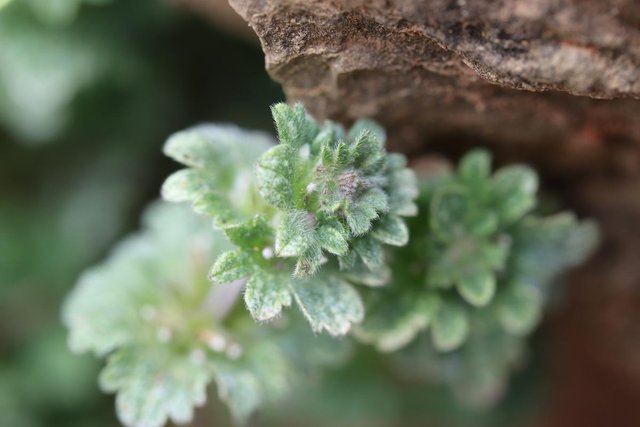
Henbit (Lamium amplexicaule) is a member of the mint family that probably originated in Eurasia but has now been introduced and naturalized around the world, including here in North America. Since I've only really been researching and enjoying wild edibles for a few years now, this was one of the more recent species that I've encountered. In fact, when I first stumbled upon it in the wild, I saw so much of it that I hoped it was good for something. As it turns out, it sure is!

HABITAT
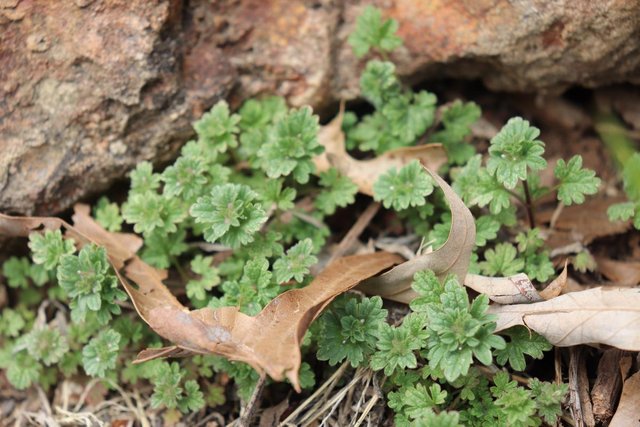
Henbit can be found in a variety of locations including fields, lawns, and what are commonly known as "waste areas." It is an annual herb in the mint family and can be useful in preventing erosion. Moreover, it provides an important supply of nectar for bees and hummingbirds, plus some animals enjoy eating both the plant and the seeds.
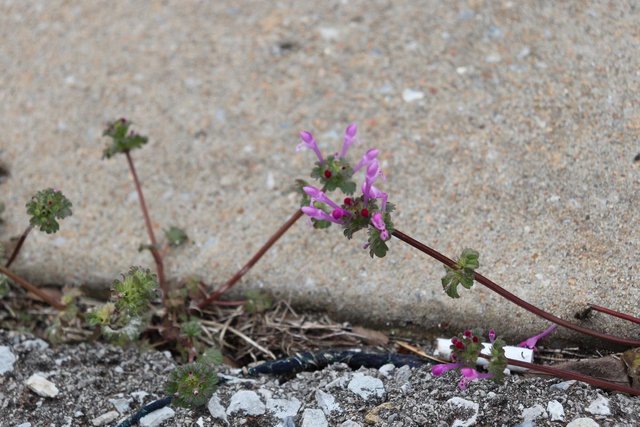
It shows up early in the spring and once you know what you are looking for, you might find it all over the place. Recently we even found some growing in the parking lot at the dentist, as pictured above. It can sprawl across the ground and make an attractive covering too, especially when it is in bloom!

USES
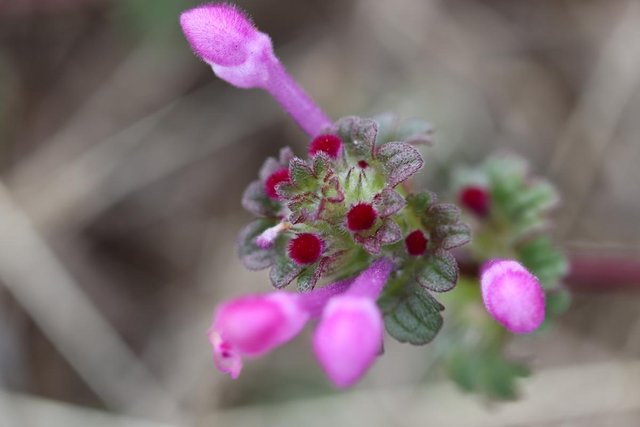
Like many other wild edibles, Henbit can be enjoyed either raw or cooked. The leaves, stems, and flowers of the plant are all edible. Although it is a member of the mint family, it does not really taste like many other mints. While I eat most of the henbit that I find raw in the wild, it can be added raw to salads or cooked in stir-fries or stews.

PROPAGATION
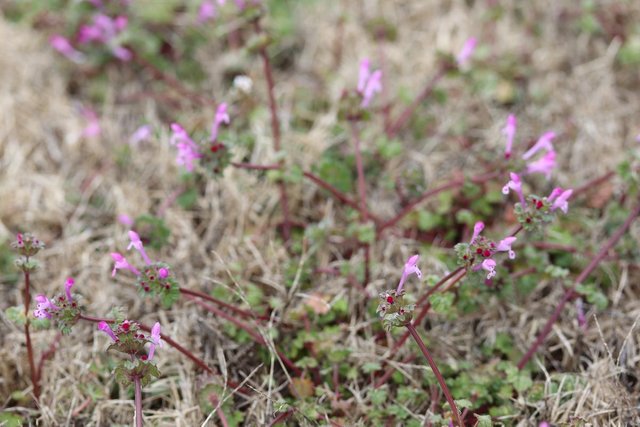
Since Henbit is an annual, it reseeds itself from seed each year. This means that if you want it some back, make sure not to eat it all before it flowers and goes to seed. I've not collected any of the seeds yet, but I know many areas where this plant grows in abundance.
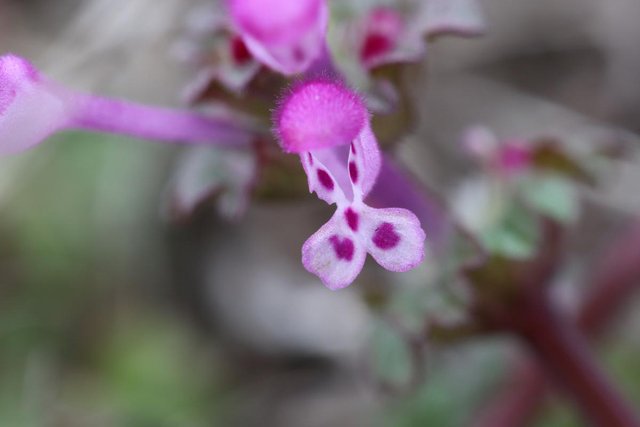
A few other common wild edibles that look somewhat similar are Creeping Charlie and Purple Deadnettle. I've previously covered Creeping Charlie, and I think that Purple Deadnettle may be next on my list. Enjoying and learning about foraging for wild edibles is not only a great way to eat healthy for free, but also a potentially life-saving survival skill. I'd personally rather know what wild plants can be eaten than to end up in a desperate situation with no clue. Feel free to follow along. I'll continue to share as I continue to learn!

As always, I'm @papa-pepper and here's the proof:

Until next time…
Don’t waste your time online, invest it with steemit.com


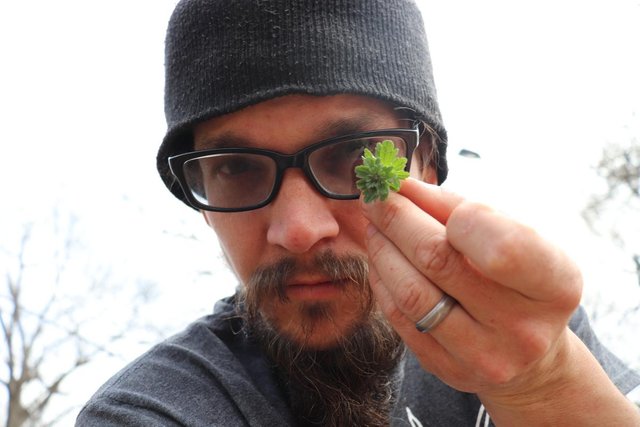
Thanks @ papa-pepper ...
post which is very useful for me who always read post @ papa-pepper ....
Downvoting a post can decrease pending rewards and make it less visible. Common reasons:
Submit
Great information dear @papa-pepper
Your are doing awesome all the time .
That photography is awesome too .
Bit one thing . your proof pics are always funny hahahhaha .
I saw them it make me laugh .
Whats the reason behind this
Downvoting a post can decrease pending rewards and make it less visible. Common reasons:
Submit
It's just a joke, but it also shows that I took the photos and made the post. Mostly just for fun!
Downvoting a post can decrease pending rewards and make it less visible. Common reasons:
Submit
Hahaha great it is . but funny too . keep it up
Downvoting a post can decrease pending rewards and make it less visible. Common reasons:
Submit
Thanks for your sharing usefull and informative article, i like it and upvote and resteem your post to more than 1350 my follower, greeting friendship from me @abialfatih in aceh indonesia
Downvoting a post can decrease pending rewards and make it less visible. Common reasons:
Submit
Good post papa,,,good information, thanks
Downvoting a post can decrease pending rewards and make it less visible. Common reasons:
Submit
Mama Splatts was digging into edible plants a while back. When she was telling me stuff all the different wild plants that edible, my mind was blown!! Of course I don’t remember them but now you have provided a great place of reference.
Get your grub on!!
Downvoting a post can decrease pending rewards and make it less visible. Common reasons:
Submit
It is really amazing how much free food is laying on the ground out there! We love it!
Downvoting a post can decrease pending rewards and make it less visible. Common reasons:
Submit
Downvoting a post can decrease pending rewards and make it less visible. Common reasons:
Submit
Wow it can be eaten raw , I wonder what it taste likes.. what a useful plant , thank you so much for sharing, I hope it has some medicinal purposes though
Downvoting a post can decrease pending rewards and make it less visible. Common reasons:
Submit
The flowers are very sweet. The leaves taste more... well, healthy
Downvoting a post can decrease pending rewards and make it less visible. Common reasons:
Submit
thank you for sharing
Downvoting a post can decrease pending rewards and make it less visible. Common reasons:
Submit
Wow .. Beautiful plant, new this time i see .. This can add to my supervision about the plant .. Thanks for sharing @papa-pepper
Downvoting a post can decrease pending rewards and make it less visible. Common reasons:
Submit
I’ve never seen this herb yet here in Philippines but maybe one day I will encounter this plant in the bushes while walking our dog Mj, so now I know. Thanks @papa-pepper.
Downvoting a post can decrease pending rewards and make it less visible. Common reasons:
Submit
There could be some there. Let me know if you find any! Thanks!
Downvoting a post can decrease pending rewards and make it less visible. Common reasons:
Submit
Sure I will.
Downvoting a post can decrease pending rewards and make it less visible. Common reasons:
Submit
shooting and explanation on your post is very clear, and the plants you share are no less unique, you are a great writer thanks for sharing.
Downvoting a post can decrease pending rewards and make it less visible. Common reasons:
Submit
this plant is very useful according to my read in your post @papa-pepper.
the first time this plant is beneficial to the body.
@papa-pepper, what this plant can also overcome all the diseases in the body, because in our place does not seem to have this plant.
Downvoting a post can decrease pending rewards and make it less visible. Common reasons:
Submit
sir, your 📮post is 👍nice
Downvoting a post can decrease pending rewards and make it less visible. Common reasons:
Submit
^--- You made this exact same comment at least 13 times in the last 2 hours. View these duplicate comments
Upvote this comment to support @duplibot and help reduce spam and superfluous comments.
Downvoting a post can decrease pending rewards and make it less visible. Common reasons:
Submit
Sounds nice, I'll love to have some. I'll be in check in case I happen to find one.
We love what you do, keep it up
Downvoting a post can decrease pending rewards and make it less visible. Common reasons:
Submit
Good to know I have no clue what's edible. If I had to survive in the bush I would die
Downvoting a post can decrease pending rewards and make it less visible. Common reasons:
Submit
thank you for sharing @papa-pepper
Downvoting a post can decrease pending rewards and make it less visible. Common reasons:
Submit
I am very happy with mint plants, what kind of plant is similar mamfaatnya with mint plants that we usually find in restaurant foods.
Downvoting a post can decrease pending rewards and make it less visible. Common reasons:
Submit
the flowers are also very beautiful ,,, wild plants are interesting ,,, hopefully the people do not pick the flowers too ,,,
very useful ,,, thanks ,,, papa ,,,
Downvoting a post can decrease pending rewards and make it less visible. Common reasons:
Submit
And I know that your intention is to create awareness among people and share the information and sharing your knowledge about this plant is good. I like your post.
Downvoting a post can decrease pending rewards and make it less visible. Common reasons:
Submit
Thank you @funatoz!
Downvoting a post can decrease pending rewards and make it less visible. Common reasons:
Submit
Your welcome @papa-pepper
Downvoting a post can decrease pending rewards and make it less visible. Common reasons:
Submit
The flower looks like an orchid. I have only taken one botany class so I can't remember how to describe it properly, but how it is isosceles-ish having the two mirrored sides and the third a smaller petal. Is this true at all? Is it in that family ?
Downvoting a post can decrease pending rewards and make it less visible. Common reasons:
Submit
Perhaps the flower does look a bit like it, but these are not in the same family as orchids. This flower is also very tiny, and was photographed with a macro lens. Good point though on the similarity. They sure are beautiful!
Downvoting a post can decrease pending rewards and make it less visible. Common reasons:
Submit
this is the cucumber I planted in my garden near the mountain @ papa-peppper, does @ papa-pepper like with cucumbers
Downvoting a post can decrease pending rewards and make it less visible. Common reasons:
Submit
Yes I do!
Downvoting a post can decrease pending rewards and make it less visible. Common reasons:
Submit
The field behide my house is covered in henbit, theres so much of that stuff when you walk past all you smell is mint. @papa-pepper thank you for sharing this information with the community I learn something new everyday from you
Downvoting a post can decrease pending rewards and make it less visible. Common reasons:
Submit
I always say, there is something to learn from Papa everyday. Never heard this before...or seen one. Maybe because of where i live. Thank you for this Papa.
Downvoting a post can decrease pending rewards and make it less visible. Common reasons:
Submit
I have not seen this plant growing anywhere here in the south. Perhaps too hot or the soil conditions too poor? The leaves look like they have fine fuzz on them. We can grow mint here but it is not easy due to the dry season. So if it is a member of the mint family perhaps we can grow it if I can find seeds.
Downvoting a post can decrease pending rewards and make it less visible. Common reasons:
Submit
Are you a Plant specialist?.Really excellent post.
Downvoting a post can decrease pending rewards and make it less visible. Common reasons:
Submit
No, I am not a specialist. I just like to learn practical knowledge.
Downvoting a post can decrease pending rewards and make it less visible. Common reasons:
Submit